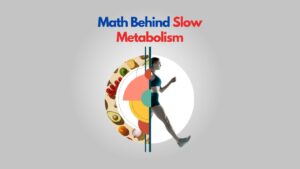
Vanshika
Bariatric Dietician & Content Writer
What is Energy Balance and Obesity?

Bodyweight and obesity are increasing worldwide, in both the developing and developed worlds. To maintain a steady bodyweight, energy intake must match energy expenditure perfectly throughout time, a condition known as energy balance. Understanding the physiologic control of energy balance may aid in the development of methods to combat the global obesity pandemic. When the body’s energy balance is positive (i.e. Obesity is frequently attributed to either excessive dietary intake or a lack of physical activity.), obesity develops. At high levels of energy intake and expenditure, human physiology is geared toward maintaining energy balance.
First, altering both energy intake and expenditure—rather than only concentrating on one or the other—is necessary to reduce obesity. Food restriction alone won’t be sufficient to combat obesity.
In the past, a high calorie intake was attained through vigorous physical activity; however, in the present-day sedentary society, it is increasingly attained through weight gain.
Principle behind energy balance -
Back in school we all have heard and learned about thermodynamics, where we learned that energy cannot be destroyed but it can be gained, lost or stored. Based on the same principle. Our body works. Whenever you eat something it contains some amount of energy. This energy will be stored or lost depending on the amount of your physical activities.
Basically, when we say balance, it means the amount of energy is consumed (i.e energy intake) should be equal to energy expenditure. When energy balance is stable your body weight is maintained.
Whereas on the other hand, If the energy intake is more and energy expenditure is less you can be overweight or obese over the period of time.
Another side of the coin is when energy expenditure exceeds energy intake, a state of negative energy balance occurs, resulting in a loss of body mass.
Where does this energy come from?
The energy comes from the food or drink you intake. Carbohydrates, protein, fats, are the components of energy. Humans expend energy through resting metabolic rate (RMR), which is the amount of energy required to sustain the body at rest; thermic effect of food, which is the energy cost of absorbing and metabolizing food consumed; and energy expended through physical activity.
Body fat levels have increased as a result of our emphasis on certain nutrients, intensive dietary advice, frequent dieting, and processed food consumption. While some people blame weight gain on calories, this isn’t the complete story.
To blame weight gain on calories is like to blame weapons during wars. Food calories are not the only source of a distorted energy balance. It is the complete way of life and environment.
The more we focus on calories and dietary restraint as a society.
So, where should we concentrate our efforts?
Consider ingredients rather than nutrition labels.
The nutrition label is largely useless until we know what we’re eating. When it comes to Chips, 100 calories isn’t cool. So, if monitoring is your thing, focus on food quality rather than quantity.
Why is energy balance so important ?
Age, gender, physical activity, and pre-existing medical issues all influence predicted calorie requirements. Though a person’s energy needs alter, energy balance is critical for healthy weight loss. Weight loss plans and diets that do not take this into account result in excessive weight loss with loss of lean mass and muscle mass.
Some people usually think fasting or restricting diet can be one of the easiest solutions to lose weight. Food restriction causes weight reduction, but it also causes decreases in other components of energy balance, such as lower energy expenditure and bodily energy storage, as well as an increase in appetite. Because energy requirements decrease as one loses weight, one frequent method for weight loss maintenance is to try to match a lower level of energy expenditure with a lower level of energy intake. The lack of success in maintaining weight loss implies that this may not be the best option.
Looking at obesity reduction through the energy balance model allows us to identify specific ways to reduce obesity. First, through boosting physical activity in the population. The simplest strategy to enhance physical activity is to include more action into daily routines, such as walking or cycling instead of driving short distances and participating in more active hobbies like gardening or wandering. There are fewer possibilities to increase activity levels at work, although stairs can be utilized instead of the lift, and workers can walk to chat with colleagues rather than calling or emailing.
Second, focusing on ingredients of food and quality of food instead of quantity.
Failure to evaluate the energy balance results in swings between negative and positive energy balances. An optimum weight loss plan should incorporate energy balance, hunger and satiety, lifestyle factors, environmental influences, physical activity, and pre-existing medical issues.
Aastha Bariatrics is the center of excellence. Center of Excellence in Bariatric & Metabolic Surgery certification is awarded to a facility and its associated surgeons who have successfully completed the designation process of delivering high quality pre-operative and long term follow-up care.






